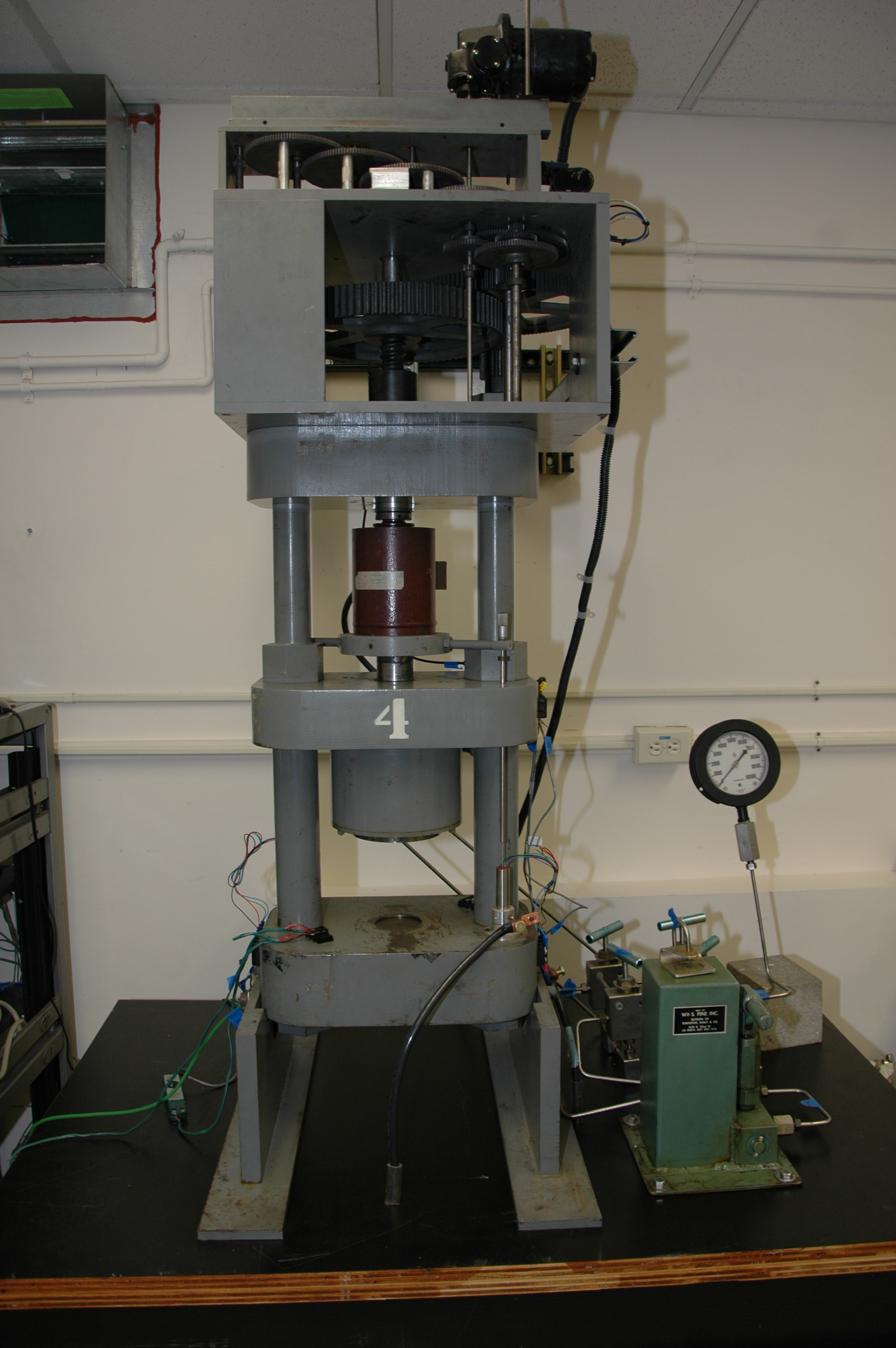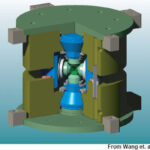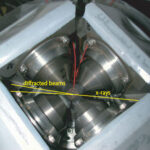The pressures found in Earth’s interior can be achieved in the laboratory using a wide variety of experimental devices ranging from cold seal bombs, which work something like a pressure cooker, to shock guns that fire puck-shaped projectiles at the sample producing short-lived pulses of extremely high pressure. We use the full range of high pressure techniques in the High Pressure Science and Engineering Center (HiPSEC) at UNLV. In NeRD lab, we use a large volume press called the D-DIA, and a Griggs modified piston-cylinder apparatus.
1. IN-SITU SYNCHROTRON X-RAY DIFFRACTION
The D-DIA apparatus is a module that fits inside a large hydraulic press. It consists of 6 tungsten carbide (WC) or diamond tipped anvils, the top and bottom of which move independently. The sample, which is placed between the anvils, is encased inside an epoxy or mullite cube. During the course of the experiment, synchrotron x-rays pass through gaps in the anvils and diffracted x-rays are collected by ten detectors. The diffracted x-rays are used to record the elastic deformation of the samples’ crystal lattice that occurs during deformation.

Figure 1. Each detector records a full powder pattern of the sample. This allows us to gather a tremendous amount of data about what various crystal populations are doing within the sample.

Figure 2. Raw X-ray diffraction spectra from the multi-element detector.
We currently use the D-DIA apparatus located at the 6BMB beam line at the Advanced Photon Source at Argonne National Laboratory to conduct deformation experiments. This beam line facility was formerly located at the X17B2 beam line at the National Synchrotron Light Source (NSLS) at Brookhaven National Laboratory. Currently we are working on olivine, quartz, alumina and most recently Mg alloys. The apparatus can pressurize samples to approximately 15 GPa and deform samples at a controlled rate.

Figure 3. The 1000-ton press at X17B2 beam line at the National Synchrotron Light Source (NSLS) at Brookhaven National Laboratory. The white beam enters the hutch through the beam pipe (seen at the far right). The detector sits on the table on the far side of the press underneath the LN dewer (tan with red stripe).
Figure 4. Left: design diagram of the D-DIA module. Right: Photograph looking down on the four side anvils with the sample in the center. The yellow lines show the path of the x-rays.

Figure 5. The sample assembly resting on the bottom anvil following deformation.
2. Piston Cylinder Griggs Apparatus
We have a Griggs modified piston cylinder in NeRD lab. Our Griggs apparatus can achieve pressures up to 1.5 GPa. The sample assembly contains a furnace that allows us to heat samples to about 1300˚C. We can deform samples at strain rates between 10-3/sec and 10-6/sec. We can also conduct hydrostatic experiments. The apparatus allows us to simulate the conditions in the upper ~50 km of the Earth’s crust.

Figure 6. The Griggs machine located in NeRD Lab, Geosceince Department, University of Nevada Las vegas (UNLV).

